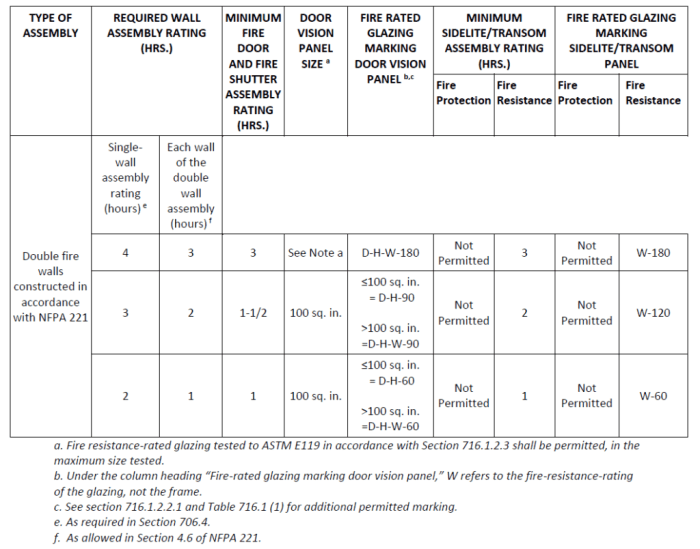Fire-resistance-rated glazing can provide fire protection for up to a specified duration, offering a critical line of defense in the event of a fire. This article delves into the concept of fire-resistance ratings, the construction and components of fire-resistance-rated glazing, and its applications in building construction.
By understanding the mechanisms and benefits of fire-resistance-rated glazing, architects, engineers, and building owners can make informed decisions to enhance fire safety in their projects.
Fire-resistance-rated glazing plays a vital role in compartmentalizing fire and preventing its spread, ensuring the safety of occupants and minimizing property damage. Its ability to maintain integrity and insulate against heat transfer makes it an essential element in fire protection strategies.
Fire-Resistance Ratings

Fire-resistance ratings are numerical values assigned to building materials and assemblies that indicate their ability to resist the spread of fire for a specified duration. They are determined through standardized fire tests conducted by accredited testing laboratories.
Different types of fire-resistance ratings exist, including:
- Fire-Resistance Duration:The time in hours or minutes that a material or assembly can withstand a fire without collapsing or allowing the passage of fire or smoke.
- Temperature Rise Limit:The maximum temperature allowed on the unexposed side of a material or assembly during a fire.
- Flame Spread Index:A measure of how quickly a flame will spread across the surface of a material.
- Smoke Developed Index:A measure of the amount of smoke produced by a material during a fire.
Fire-Resistance-Rated Glazing
Fire-resistance-rated glazing is a type of glazing that has been designed and tested to meet specific fire-resistance ratings. It consists of:
- Glass:Specially treated glass that resists cracking and shattering during a fire.
- Frame:A metal frame that supports the glass and provides fire resistance.
- Gaskets and Seals:Materials that seal the gaps between the glass and frame, preventing the passage of fire and smoke.
Fire Protection Benefits
Fire-resistance-rated glazing provides fire protection for up to a specified duration by:
- Containing the Fire:The glazing prevents the fire from spreading to other areas of the building.
- Blocking Heat Transfer:The glazing insulates the unexposed side of the building, reducing the risk of ignition.
- Limiting Smoke Penetration:The glazing prevents smoke from entering the unexposed side of the building, providing a clear escape path for occupants.
Applications of Fire-Resistance-Rated Glazing: Fire-resistance-rated Glazing Can Provide Fire Protection For Up To

Fire-resistance-rated glazing is required or recommended in a variety of applications, including:
- Fire-Rated Doors and Windows:To provide fire protection for openings in fire-rated walls and partitions.
- Atrium Enclosures:To prevent the spread of fire and smoke in large open spaces.
- Stairwell Enclosures:To provide a safe escape route for occupants during a fire.
- Elevator Shafts:To prevent the spread of fire and smoke through elevator shafts.
Considerations for Installation

Proper installation is essential for the effectiveness of fire-resistance-rated glazing. Steps involved in installation include:
- Framing:Installing the metal frame according to the manufacturer’s specifications.
- Glazing:Inserting the glass into the frame and securing it with gaskets and seals.
- Sealing:Applying sealant to the gaps between the glass and frame, as well as around the perimeter of the glazing.
Maintenance and Inspection
Regular maintenance and inspection are crucial to ensure the continued performance of fire-resistance-rated glazing. Inspection should include:
- Visual Inspection:Checking for any damage to the glass, frame, or seals.
- Functional Test:Operating the glazing to ensure it opens and closes smoothly.
- Maintenance:Cleaning the glazing and replacing any damaged components as needed.
Expert Answers
What are the different types of fire-resistance ratings?
Fire-resistance ratings are typically expressed in hours, indicating the duration for which a glazing system can withstand a standard fire test without failure.
How does fire-resistance-rated glazing prevent fire spread?
Fire-resistance-rated glazing is designed to maintain its integrity and insulate against heat transfer, preventing the spread of flames and smoke through openings in walls and partitions.
What are the common applications of fire-resistance-rated glazing?
Fire-resistance-rated glazing is commonly used in fire-rated walls, doors, and windows in commercial buildings, hospitals, schools, and other public spaces where fire safety is paramount.